Indian Sugar Industry - Overview
An important industrial crop in India, sugar contributes significantly to the growth of the country’s agriculture and also National Gross Domestic Product (GDP). Importantly, the sugar and allied industries support India’s rural economy in the traditional sugarcane growing areas, as the farmers generally get 50-60% higher returns from sugarcane as compared to competing crops. Being a sturdy crop, sugarcane can withstand weather fluctuations better than other crops. Further, it is supported by regular research and development to evolve improved varieties of sugarcane, leading to better protection of the interests of both, the farmers and the sugar industry.
The Sugar industry is one of the largest agro-based industries in India, with a total turnover of over ₹1,00,000 crore, including sugar and its co-products. Around 50 million farmers, along with around 2.5 million farm and industrial workers, are involved in sugarcane farming and the sugar manufacturing value chain.
Government policies, over the past few years, have proactively addressed the major issues confronting the sugar industry, leading to improved financials and better cane price paying capacity of sugar mills. This has also helped in better management of surplus sugar in the country through effective export schemes. Consequently, sugar cyclicality, a bane of the industry, has become a thing of the past. The minimum sale price of sugar (MSP), sugar release quota mechanism and the Ethanol Blended Petrol (EBP) programme policies are all supporting the sugar industry and, in turn, the sugarcane farmers.
Prior to 2014, there were perpetual delays in payment of cane dues of farmers. However, the constructive policies of the present Government have led to improvement in the fundamentals and liquidity of sugar mills, resulting in significant improvement also in payment of cane price to the farmers. The domestic ex-mill prices of sugar are also now stable and are in the range of ₹32-35/kg, enabling sugar mills to make timely payment of cane dues to farmers for Sugar Season 2021-22. The average retail price of sugar in the country is about ₹41.50/kg.
India Sugar: Strong production and higher realisations suggest cyclicality is a thing of the past
*sugar diversion to ethanol production
Note: Data pertains to India for Sugar Season (SS); 2020-21(P) is Provisional & 2021-22 (E) is Estimate
Source: ISMA
Triveni estimates for SS 2021-22 : Production 35.5 million tonnes, Domestic Consumption 27.5 million tonnes, Exports 10.0 million tonnes,
Closing stock 6.2 million tonnes and Sugar Diversion to Ethanol of 3.5 million tonnes
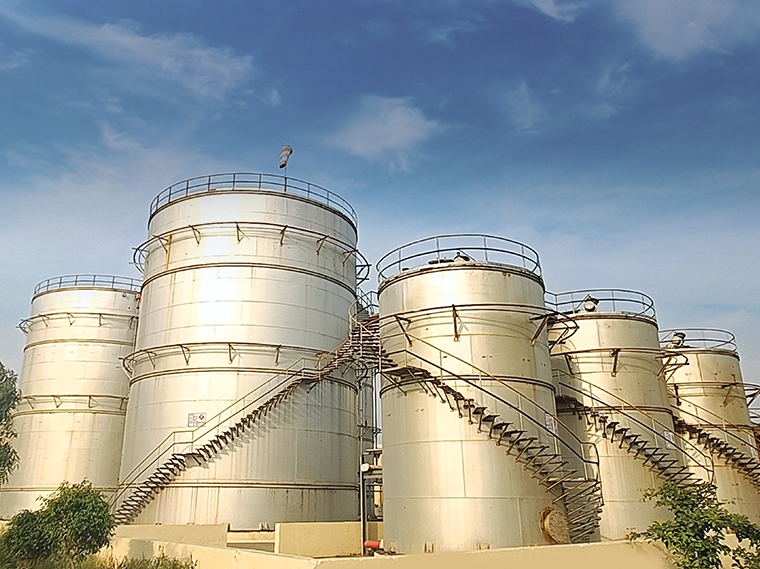
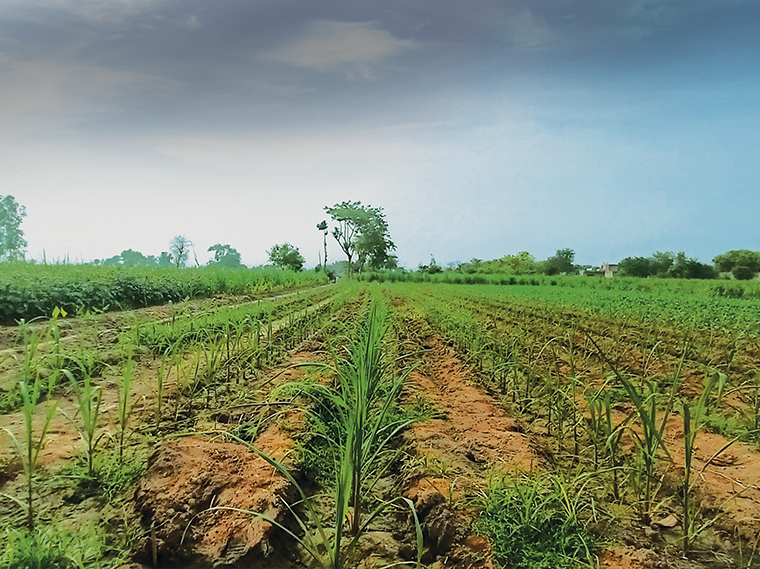
The average domestic sugar price realisation for the Company was ₹35,020/tonne during the year as against ₹32,703/tonne in the previous year.
During SS 2021-22, states like Maharashtra and Karnataka saw an increase in their sugarcane area along with better crop yield, leading to record production for the country. Further, despite the industry’s active participation in export campaign, SS 21-22 is likely to close with a stock of at least 6.9 million tonnes, which is sufficient to cater to domestic consumption demand for 3 months.
Monsoon in 2021 had replenished the major dams in states such as Maharashtra and Karnataka, which encouraged farmers to roll back to their most remunerative crop i.e. sugarcane. Based on the initial estimates, sugarcane area may increase by 5-10% this year. Water levels in these states are still intact, and with the forecast of normal monsoon, another year of high production is expected in SS 22-23. Net availability of sugar and the broader health of the industry will depend on parameters such as exports and optimised diversion of B-heavy for Ethanol production.
Indian Ethanol Industry – Overview
In line with global trends, energy security and transitioning to a low carbon economy has emerged as a priority for India in recent years. The Central Government has accordingly been focussing on reducing the country’s dependence on imported crude oil while minimising the environmental impact resulting from pollution and emissions. The Government has been actively promoting the production and blending of fuel ethanol with petrol, and has targeted 20% blending through Ethanol Blended Petrol (EBP) Programme or EBP20 by 2025. EBP20, which was earlier targeted by 2030, was advanced in December 2020, reaffirming the Government’s focus and commitment towards biofuels.
The NITI Aayog has projected an ethanol demand of 10.16 billion litres by 2025, based on the growth in vehicle population. In July 2021, the ethanol production capacity in India was 4.26 billion litres as derived from molasses-based distilleries and 2.58 billion litres from grain-based distilleries, which was proposed to be expanded to 7.6 billion litres and 7.4 billion litres respectively. This was estimated to require 6 million tonnes of sugar and 16.5 million tonnes of grains per annum by 2025.
Till the year 2014, ethanol distillation capacity of molasses based distilleries was only about 2.15 billion litres. However, policy changes made by the Government over the last eight years has seen the capacity of molasses-based distilleries go up to 5.69 billion litres. Capacity of grain-based distilleries, which was 2.06 billion litres in 2014, has also risen - to 2.98 billion litres. In total, India’s ethanol production capacities have increased from 4.21 billion litres to 8.67 billion litres in just 8 years.
The blending programme promises several benefits, such as augmentation of domestic energy production leading to increase in energy security; reduction of oil import bill, thereby saving foreign exchange; addressing structural problems in sugar industry and providing remunerative income to farmers; making use of damaged and surplus grains; and addressing environmental concerns.
To achieve the blending targets, the Government is encouraging sugar mills and distilleries to enhance their distillation capacities and is facilitating them in availing loans from banks, with interest subvention @ 6% or 50% of the interest charged by the banks, whichever is lower, being borne by Government. This will bring in an investment of about ₹41,000 crore.
As a result of these measures, it is likely that ethanol distillation capacities in the country would be doubled by 2025, which would ensure realisation of the 20% blending target. It will also address the problem of surplus sugar and ensure timely payment of cane dues of farmers.
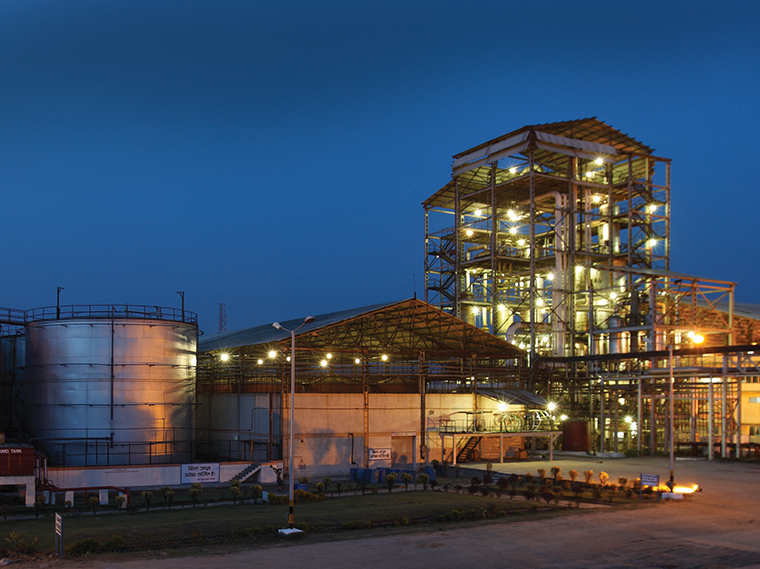
It is likely that ethanol distillation capacities in the country would be doubled by 2025, which would ensure realisation of the 20% blending target.
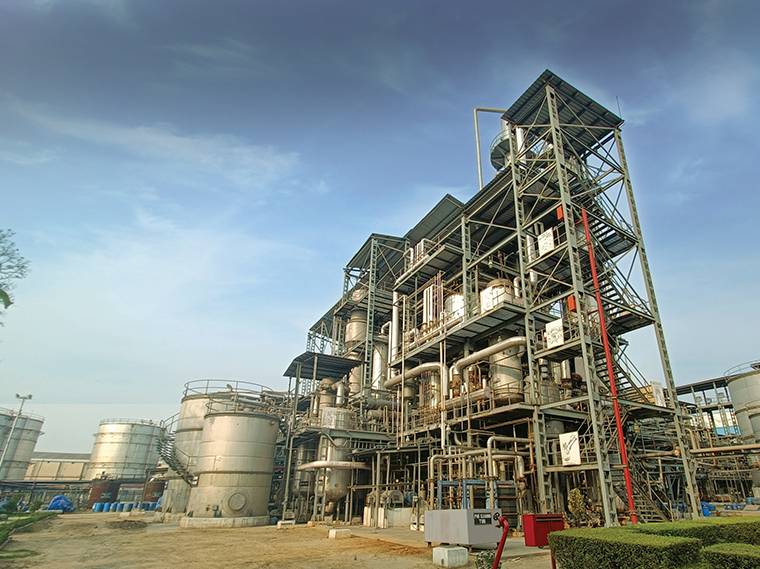
In the Alcohol business, where operations continued uninterrupted even amid the lockdown, we delivered strong performance in a difficult pandemic-induced environment.
As per estimates, at 20% blending level, ethanol distillation capacity is estimated to grow by more than three times to 15.00 billion litres annually, supported by the financial assistance scheme introduced by DFPD during 2018-2021 to increase ethanol production capacity.
The Ethanol Blended Petrol Programme would also have the following impact on the economy:
It would benefit maize and paddy farmers, addressing their surplus grain problem; about 16.5 million tonnes of grains will be utilized
Diversion of 6.0 million tonnes of surplus sugar would address the problem of surplus sugar, bring about stability in sugar price, improve financials and liquidity of sugar mills, and ensure timely payment of cane dues to farmers
It will bring new investment opportunities as about ₹41,000 crore, to set up new distilleries in rural areas and help in job creation in villages
It will lead to improvement in air quality by reducing Carbon Monoxide emission by 30-50% and Hydrocarbon by 20%
It would help save foreign exchange of more than ₹40,000 crore on account of crude oil import bill, and would reduce dependence on imported fossil fuel, thus helping in achieving the goal of Atmanirbhar Bharat in the Petroleum sector
Further, the Government of India has announced that from April 2023 all new vehicles will be E20 compliant. The introduction of duty differential of ₹2 per litre, effective October 2022, between ethanol blended petrol and unblended petrol in the budget 2022-23 should further help reduce India’s dependence on imported fuels. In view of the increasing crude oil prices globally, and the resultant petrol prices in the country, additional duty and resultant hike in prices to end users would encourage higher usage of blended fuel by OMCs and accelerate the movement towards achieving the targets of EBP20.
As partners in India’s journey of self-reliance, Triveni has structured its Power Transmission Business (PTB) around the three distinct segments of Gears, Built to Print and Defence, with comprehensive portfolios designed to make the country self-sufficient.
Industrial Gears Industry – Overview
The global industrial gearbox market is expected to grow at a CAGR of 4.2%, to reach USD 31.3 billion by 2026.
Gearboxes can be broadly classified into high speed and low speed. The next level of categorisation can be based on the type of gearbox:
Single helical and double helical
Spiral bevel
Worm
Planetary
Combination of helical and spiral bevel
Combination of helical and planetary
PTB is focussed on high-speed gears and gearboxes, and niche low speed gearboxes, predominantly Engineered-To-Order. High-speed applications include Steam Turbine Generator, Gas Turbine Generator, Blowers, Pumps, ID / FD Fans and Centrifugal compressors. Niche Low speed applications include: Extruders, Agitators, Select mill drives (HRM / CRM / Briquetting press, VRM).
Majority of the domestic players are into standard catalogue type gearboxes, and very few players are in customised gear manufacturing, which requires technological know-how, sophisticated infrastructure for manufacturing and quality assurance, along with stringent adherence to industrial standards, in addition to highly skilled and experienced manpower having the domain knowledge from the system and application perspective.
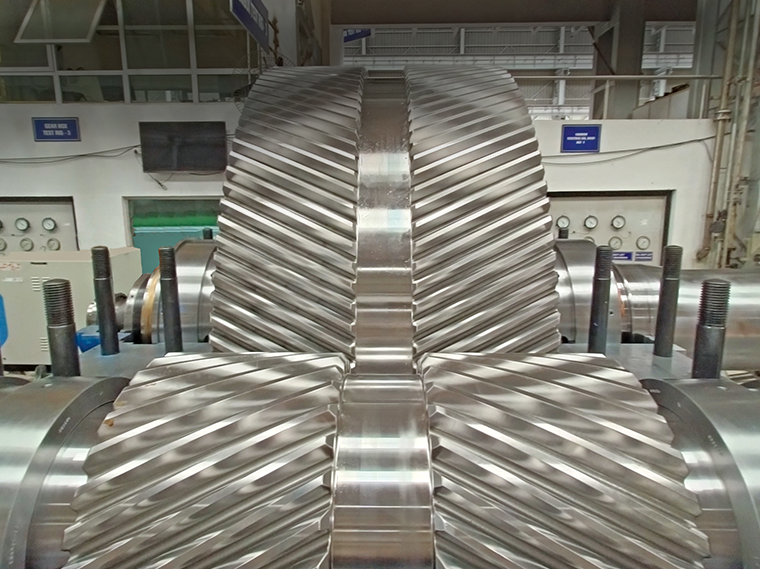
Currently, the Power Transmission Business is supplying gearboxes to various OEMs in Japan, Korea, China, Malaysia, Indonesia and in Europe (Italy, France, Germany, and Spain), US and Latin America. During the year, the business also forayed into the UK region.
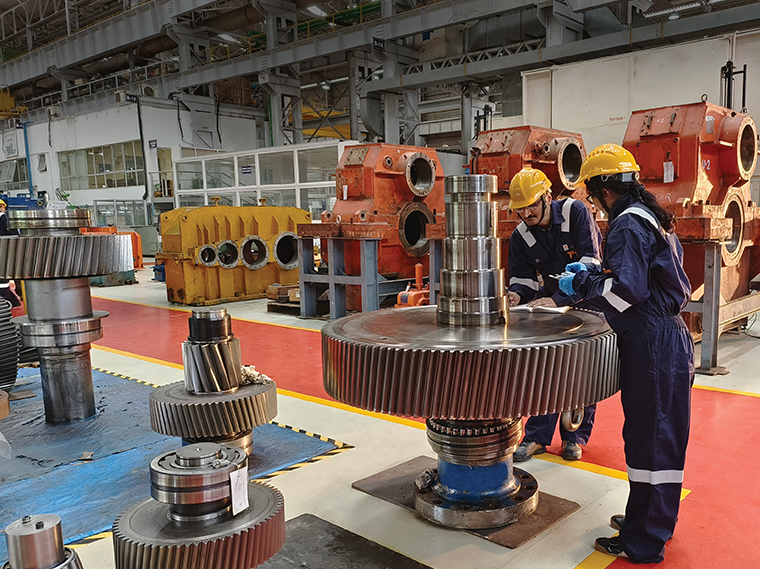
Our strong business performance in this segment is driven by our continuous and deep-rooted training initiatives covering employees across the business.
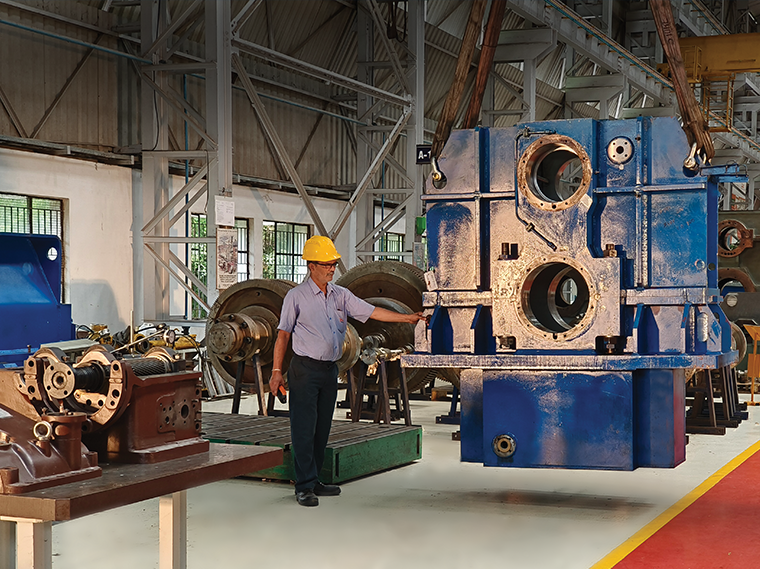
Multiple initiatives are being taken by the Government of India under the Production Linked Incentive (PLI) scheme across 15 sectors, to boost domestic manufacturing under Atmanirbhar Bharat Abhiyan (Self-reliant India campaign).
Indian Water Industry - Overview
India is one of the world’s most water-stressed countries. It has also remained backward in treatment and re-use of household wastewater. Water is a State subject in India, and the sector has been largely underfunded. A Niti Aayog report released in 2019 predicts Day Zero for 21 Indian cities in the next few years. Day Zero refers to the day when a place is likely to have no drinking water of its own.
The situation is clearly critical and the need for India to take urgent and adequate measures to prevent potential water scarcity cannot be overemphasised. This urgency is expected to drive significant growth for the country’s water and wastewater treatment markets.
The Government has been laying emphasis on capacity building and infrastructure development through programmes such as AMRUT, Smart Cities, Namami Gange & Swash Bharat, and on moving to one city and one operator model, where one agency will be responsible for all water needs and waste water management systems in a city. Going forward, investments in the sector will be directed towards providing 24x7 water supply, improving industrial water use efficiency, deploying cost-effective seawater desalination technologies, and encouraging wastewater recycling and reuse. By 2030, the water demand from the municipal and industrial segments is expected to reach 1,500 cubic km.
Due to the revision of discharge standards of STPs in metropolitan and other areas by NGT, which has become more stringent, all older STPs have become non-compliant and there is need for retrofitting and refurbishment of these plants. Going forward, there will be enormous opportunities in this segment.
The Central Government’s focus on Namami Gange for cleaning of Ganga; JICA-funded projects in Delhi, Karnataka, and Maharashtra; AMRUT programmes for pollution abatement, recycling and re-use; and stricter vigil by the National Green Tribunal will be key demand drivers.
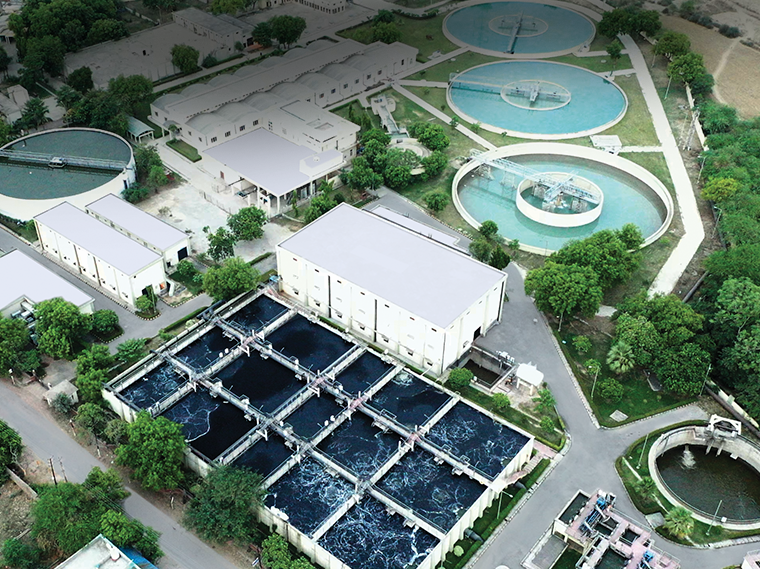
The outlook for FY 23 is optimistic, and WBG sees a good bidding opportunity, including in EPC and HAM projects.
The water and wastewater treatment technologies market is expected to register a CAGR of over 7% during 2022–2027. In view of the Government’s depleting funding resources, the PPP model is gaining popularity and more State Governments are coming forward in structuring concession Agreements. It is anticipated that States like Delhi, UP, Karnataka, Telangana, Tamil Nadu, Rajasthan will be coming up with more opportunities in Water & Wastewater treatment projects.
Due to water scarcity, new opportunities are emerging in recycle, reuse and Zero Liquid Discharge types of businesses. Sewage recycling is a new area of business, and this model is expected to emerge wherever industries are available for buying treated sewage.
The Government of India is cognisant of the water situation and has launched funding schemes like AMRUT, JJM, Namami Gange programme, Swachh Bharat Mission, etc. Over the past two or three years, there have been visible improvements in water supply and waste management at the city level. There have been some improvements in the financial and operational capabilities of ULBs.
As the Water sector is traditionally underfunded, more PPP/ HAM opportunities will arise from Water Boards and ULBs. At present, Delhi Jal Board is planning to structure projects on PPP/HAM formats. There has been a surge in the competitive landscape of Namami Gange HAM bidders and more than a dozen firms have shown interest.
Exim Bank of India is providing significant funding in Asia and Africa, and it is expected that opportunities in the Water sector will increase, going forward. There are upcoming opportunities also in South Asia, East Asia and Eastern Europe in Water & Wastewater management.
The new concept of District Metered Areas (DMAs) is getting popularity and it is expected that new business will flow in next few years.
Thus, the water sector has a positive outlook and offers significant opportunities for various stakeholders, including EPC players, private developers, consultants, and technology and equipment suppliers.